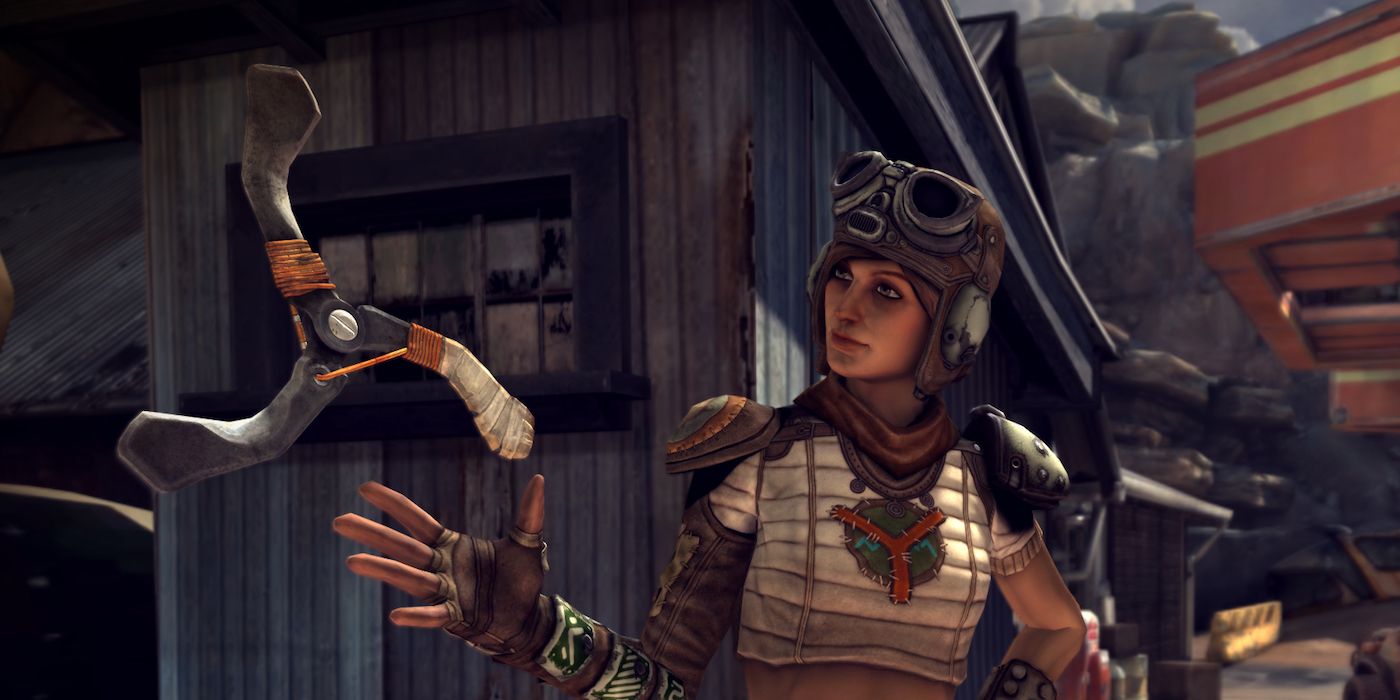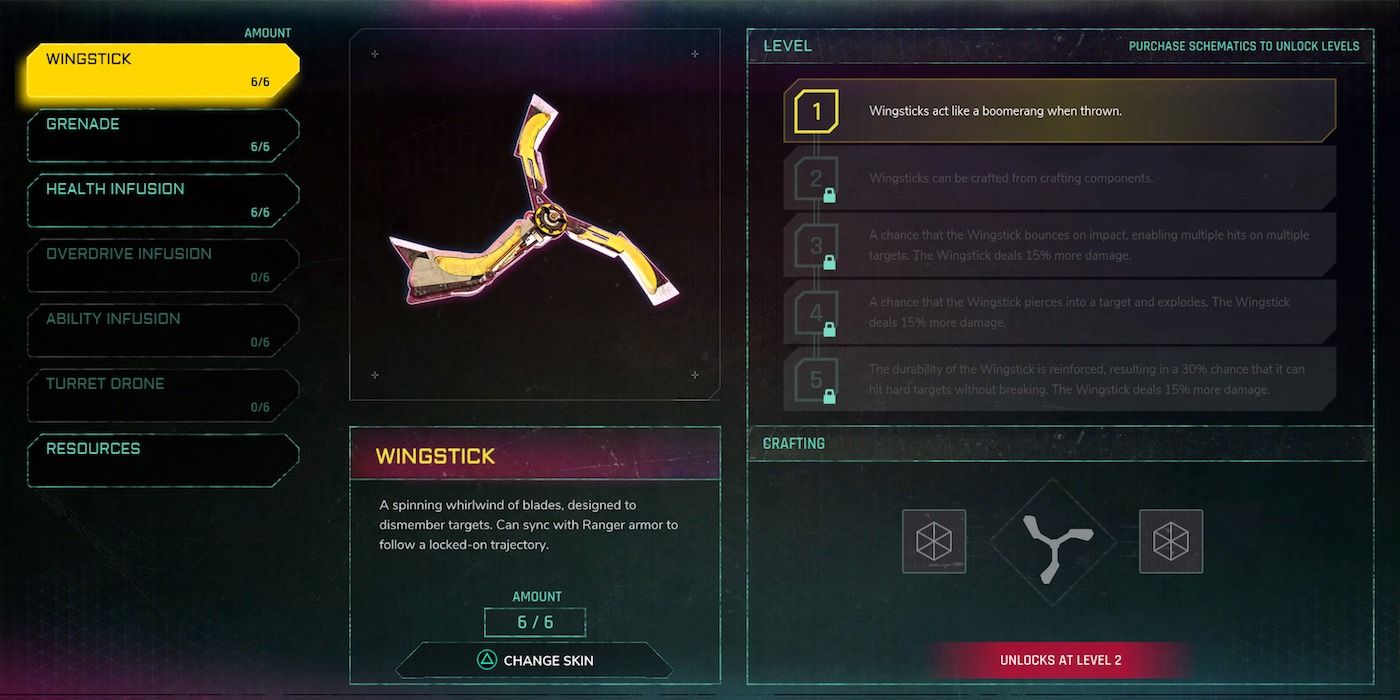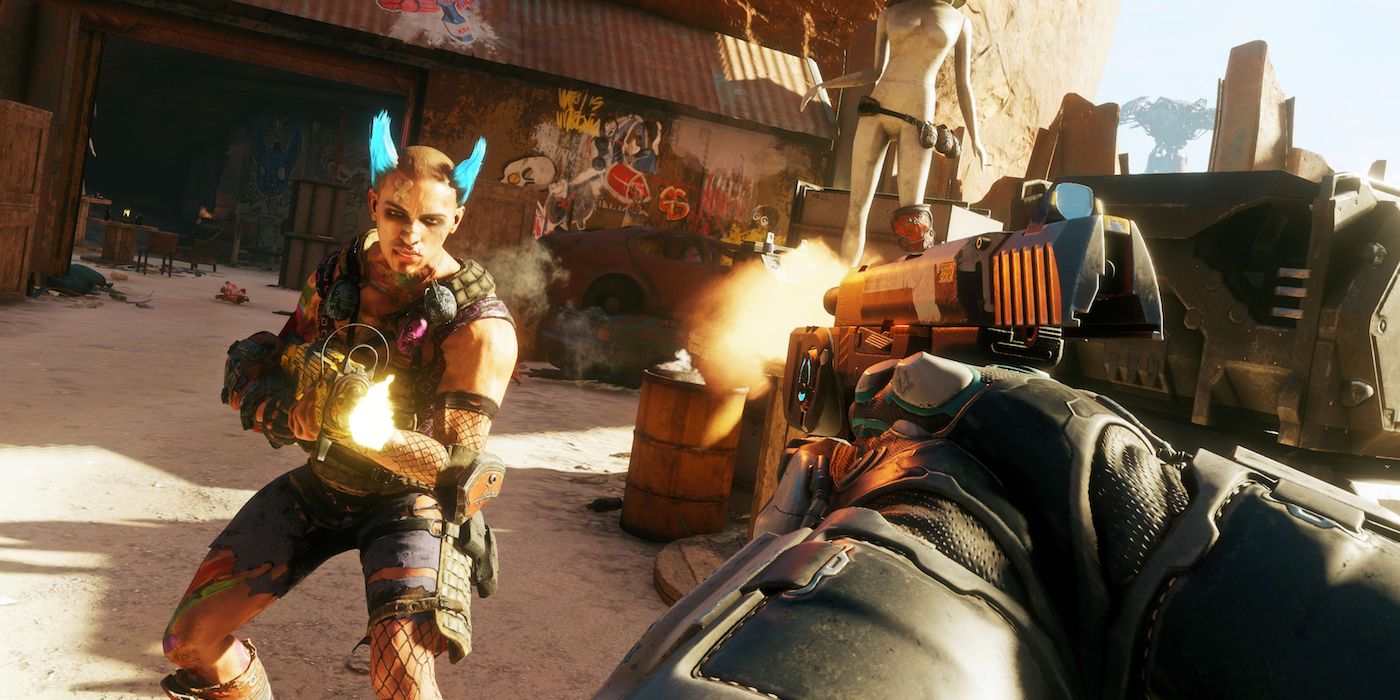The iconic Wingstick from the first Rage returns in Rage 2, but its usefulness is greatly diminished. Rage 2 is an unlikely sequel. The original Rage was subject to massive amounts of hype prior to release, with talk of a sandbox open world and "mega textures" dominating the conversation. Upon release, the game earned a decent amount of acclaim, but was not the genre-defining experience many were hoping for. There was talk of a sequel, but nothing came of it until the surprise announcement of Rage 2 last year.
Now that the game is out, critical reception is fairly strong, with special praise going out to Rage 2's focus on adrenaline-pumping FPS combat. One element of combat which returns from the original Rage is the Wingstick, a unique weapon which serves as the unofficial de facto mascot of the series. Even reviewers who disliked the game generally praised the Wingstick's unique mechanics and impressive impact on the battlefield.
In the original Rage, the Wingstick was practically a one-hit kill on pretty much any enemy, save for bosses and the heavily armored soldiers found in the final act of the game. It was arguably overpowered, but there were few moments in the game more satisfying than decapitating multiple enemies with one well-timed throw of the razor-sharp boomerang. In Rage 2, things are a bit different.
Rage 2's Wingstick Is Pretty Weak
From a gameplay perspective, Rage 2 may seem similar to the original, but it's deceptively different, with the biggest difference being the speed of encounters. In the first Rage, combat, while certainly not slow, could be approached at the player's chosen pace. In some ways, the Wingstick was used as an equalizer in combat. When things got too intense, launching a Wingstick would almost instantly eliminate at least one enemy. It was over-powered, but gloriously so.
In Rage 2, the pace of combat is much faster. In stark contrast to the original Rage, a generous auto-aim system helps redirect near-miss shots into enemy flesh, and Ranger Walker, the player character, has access to legitimate superpowers and enhanced mobility options to take down legions of mutants and bandits in the wasteland. It's a different beast from the first game, more akin to 2016's Doom reboot. With all these tools at Walker's disposal, the Wingstick seems slow and quaint.
To its credit, Rage 2 does attempt to make the Wingstick viable in combat via a series of upgrades, including the ability to change the weapon's throwing arc to hit enemies behind cover, redirect it to efficiently hit multiple enemies, and even give it the change to explode after embedding itself in a bandit's skull. These upgrades, while entertaining, do little to make up for the Wingstick's inherent weakness in Rage 2.
Rage 2 is at its best when Walker is using super powers to crush enemies underfoot, gibbing mutants with point-blank shotgun blasts, and double jumping across the arena like a heavily-armed ninja. It may sound unbelievable, but the time it takes to pull out the Wingstick, lock onto an enemy, alter the arc, throw the blade, and then wait for it to hit its target and return to Walker is simply better spent performing more extravagant maneuvers. Basically, it's faster and easier to kill bad guys using Vortex, Shatter, or a hailstorm of bullets than it is to use the Wingstick.
Perhaps future updates could find a way to make the Wingstick more viable, maybe by increasing the speed at which Walker draws and throws it. Rage 2 is a fast-paced shooter, and the second or so it takes to wind up the attack is just too long. In the early game, the Wingstick isn't totally useless, but once Walker gets their hands on some big guns and fancy abilities, the Wingstick finds itself outclassed in every way. It would be hard to imagine Rage without its signature weapon, but that signature weapon should earn its distinction through combat prowess, and not just having a cool design.



